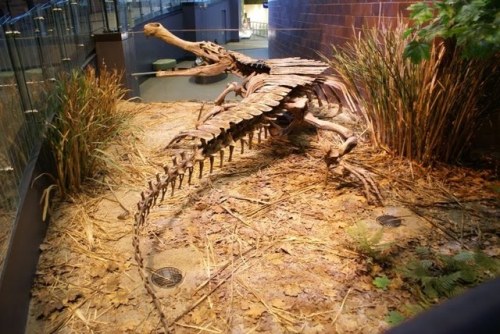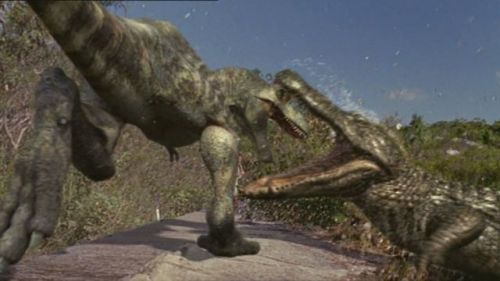Super Croc, gigantic crocodile from Cretaceous periodPaleontologist Paul Serrano and his team were s
Super Croc, gigantic crocodile from Cretaceous periodPaleontologist Paul Serrano and his team were searching near Gadoufaoua, Niger in Africa. During the search, the team came across huge pieces of fossilised bones, and recognised them as the bones from an extinct crocodile species. It was so large that it wound up as the first animal nicknamed a “Supercroc”.French paleontologists had found similar bones including skull fragments some 30 years before Serrano’s team. They named the creature Sarcosuchus imperator (flesh crocodile emperor), but before the expedition by Serrano’s team in 1997 little was known about this ancient predator.As soon as the team started digging they found massive jaw bones, each as long as some members of the team. The jaws were about 6 feet (1.8 metres) in length, and huge crushing teeth were a testament that this giant crocodile used them to tear away dinosaur flesh. They are thought to have existed during the Middle Cretaceous era, about 110 million years ago. The skull fragments found were put together, and it was estimated that they probably grew up to 40 feet (12 metres) in length, and weighed around 8 tons (17,500 pounds).The team found skull fragments, intact jaw bones, vertebrae, limb bones, and armour plates (scutes) about 30 cms long which used to run over the whole body of this species. This assemblage of bones helped the scientists to get a clear picture of about half of the giant crocodile’s skeleton. According to Serrano, “The new material gives us a good idea of hyper-giant crocodiles. There’s been rampant speculation about what they looked like and where they fit in the croc family tree.” There are annual growth rings on the scutes, and from this the scientists calculated the croc’s age to be about 50 to 60 years.Sarcosuchus does not share the same reptile family tree as modern day crocodiles, which consists of caimans, gharials, alligators and crocodiles. “It’s not a modern croc, but they share an early common ancestor, ” as per Larsson, a member of Serrano’s team.In the early Jurassic, after the split of early crocodilians into separate land based and marine based species, Sarcosuchus appeared. They were probably ambush hunters, and were adept in surprising their preys with little chance of defense. Like the modern day Indian gharials, this ancient predator had upwardly tilted eye sockets, which helped them to hide their huge body underwater while waiting for the unsuspecting preys. The other distinguishing feature is the round bony protrusion at the tip of its snout known as bulla, another common feature present in modern gharials. Larsson thinks that just like the gharials use the muscles around bulla to emit various sounds during mating, the ancient croc must have used it to emit mating calls. The bulla could also have enhanced their sense of smell and gave them an edge over other predator species.Other relatives of this animal have been recognized in fossil deposits since this initial discovery, expanding the range of large crocodile-like animals from the end-Cretaceous extinction back into the Jurassic..Source:http://on.natgeo.com/1CsQ9pshttp://bit.ly/1EYMUUYhttps://www.livescience.com/59697-super-croc-with-t-rex-teeth-ate-dinosaurs.html–RB.[__](https://www.facebook.com/TheEarthStory/photos/pcb.857650794295966/857650627629316/?type=3&theater#) -- source link
Tumblr Blog : the-earth-story.com
#fossil#fossils#animal#crocodile#super croc#sarcosuchus#science#foossilfriday

